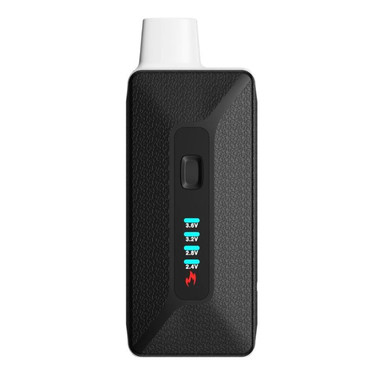Vaping Taxes in the U.S. and Worldwide: A Comprehensive Overview
Estimated 0 min read
As vaping continues to gain traction, it has become a prime target for governments seeking to generate revenue. With many vapers being smokers or ex-smokers, lawmakers often see these products as an opportunity to recover funds lost from a decline in traditional tobacco sales. Since governments have historically relied on taxes from cigarettes, vaping, which resembles smoking, is a logical target. Though some question whether vaping products should be taxed like tobacco, the growing opposition to vaping and public health concerns make these taxes politically appealing.
Vape taxes are regularly being proposed and enacted in the United States and globally, sparking debates. Support for these taxes comes from tobacco control advocates, health professionals, and public health organizations. On the other hand, those in the vaping industry and consumers argue against these taxes.
Table of Contents
- Why are vaping products taxed?
- How do vaping taxes function?
- Vaping taxes in the United States
- Vape Taxes by State
- Vaping Taxes Around the World
Why are vaping products taxed?
Excise taxes on specific products, such as vaping devices, have multiple purposes: raising government revenue, influencing consumer behavior, and offsetting societal costs, including healthcare, infrastructure, and environmental costs. For example, alcohol is taxed to curb excessive drinking, and gasoline taxes fund road maintenance.
Tobacco products have been a long-standing target for excise taxes, as the public health costs associated with smoking impact society as a whole. Proponents of tobacco taxes argue that the smokers should help cover these costs. Sometimes referred to as "sin taxes," these levies aim to dissuade unhealthy habits while also funding public health programs.
However, as smoking rates decline, governments face a revenue shortfall and must seek alternative sources of income. Given the significant role tobacco taxes play in revenue generation, these taxes are often added on top of standard sales taxes.
How do vaping taxes work?
In the U.S., most consumers pay a state (and in some cases, local) sales tax on vaping products. This already benefits government budgets before excise taxes are considered. Sales taxes are typically a percentage of the product's retail price, and many countries impose a "value-added tax" (VAT) similar to sales tax.
Vaping excise taxes come in different forms. One common method is a retail tax, applied to all vaping products or e-liquids, sometimes specifically targeting nicotine-containing liquids.
Some states impose wholesale taxes, typically charged to distributors, which are then passed down the supply chain and factored into retail prices. These taxes may apply to all vaping products or only those containing nicotine.
Vaping Taxes in the United States
While the U.S. has yet to introduce a federal vaping tax, individual states and territories have been enacting their own taxes. The number of states with vape taxes has significantly grown since 2019, driven by concerns about youth vaping.
As of early 2024, 31 states impose taxes on vaping products, with additional taxes in cities, counties, Puerto Rico, and the District of Columbia.
Vape Taxes by State
-
Colorado: Vaping products in Colorado are taxed at 56% of the manufacturer's list price. This tax began at 30% in 2021 and will gradually rise to 62% by 2027. A lower tax rate applies to products designated as Modified Risk Tobacco Products (MRTPs).
-
Georgia: Vaping taxes in Georgia consist of $0.05 per milliliter on closed-system products (such as pods or disposables), and a 7% wholesale tax on open-system devices and e-liquids. These taxes apply to both nicotine and non-nicotine products.
-
Massachusetts: Massachusetts imposes a 75% wholesale tax on all vaping products. In addition to the state tax, consumers must provide proof that their products are taxed to avoid fines and seizure.
-
Mississippi: Mississippi has introduced a new vape tax, adding to the growing list of states that are increasing taxes on vaping products. Mississippi's new tax is designed to align with broader state efforts to curb tobacco and vaping use.
-
New York: New York enforces a 20% retail tax on all vaping products. This tax affects both nicotine and non-nicotine products and represents one of the state's strategies to address growing concerns about vaping.
-
Colorado Tobacco Tax Rate for Vape: As of 2024, Colorado has one of the highest vape tax rates in the country, taxing all nicotine-containing vapor products at 56%, a rate that will continue to rise in the coming years.
Vaping Taxes Around the World
Vaping taxes are also gaining momentum internationally as governments seek to regulate the rapidly growing e-cigarette industry. While some countries have already enacted such taxes, others are still exploring or testing the viability of taxing vaping products.
Many of the approaches taken are similar to the U.S. model, with retail and wholesale taxes imposed based on the product type, nicotine content, and volume. Other countries, like the UK and Canada, are still refining their approaches, balancing the need for regulation with the desire to provide smokers with less harmful alternatives.
The taxation of vaping products is not just about generating revenue, but also about shaping consumer behavior. Many countries, particularly in Europe, have implemented taxes on e-liquids and devices to curb the rise of youth vaping and to address public health concerns.
In conclusion, while vaping taxes vary across regions, they are a growing part of public health strategies worldwide. Governments see vaping as both an opportunity for revenue and a way to limit tobacco harm, though the debate surrounding these taxes continues to intensify. Vaping businesses must stay informed about the ever-changing landscape of vape taxes to navigate these challenges and maintain compliance.







